Byron Haskin’s The War of the Worlds (1953):
Criterion Blu-ray review
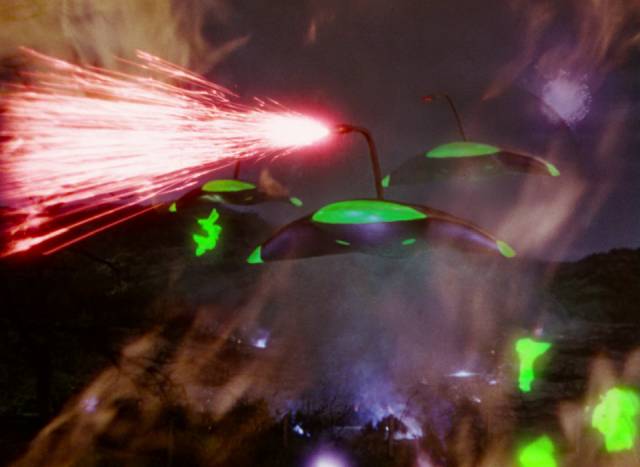
Some movies become so familiar that, seeing them yet again, it’s difficult to know whether you’re watching the movie or your accumulated memories of it. My first memory of George Pal’s adaptation of H.G. Wells’ The War of the Worlds (1953), directed by Byron Haskin, is of a single scene which I saw on a British television show in the early 1960s. I think it was called Cinema, and it was a weekly half-hour in which a critic presented and commented on clips from various movies (it was also the first place I experienced something from Hammer Films, a scene from The Gorgon [1964]). The scene from Pal’s production was the one in which Pastor Matthew Collins (Lewis Martin), brandishing his Bible, walks out to confront the Martian war machines and is immediately incinerated (which elicited a comment from my father, who was also watching, about the stupidity of religion).
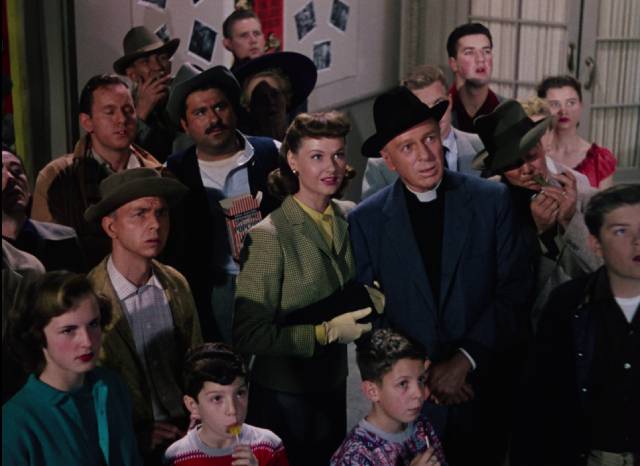
I’m not sure whether I saw that scene before or after I read Wells’ novel, the first adult book I ever read, when I was eight or nine. Possibly it was seeing the scene which made me tackle the book at such a young age. (We had a lot of books in the house and that Penguin paperback was on the shelf.) The book itself stuck with me, its vivid imagery taking root in my imagination, so that when I did finally see the whole of the 1953 movie, I experienced a sense of excitement tempered with dissonance – the shift from the familiar English setting to California, the displacement from the late Victorian era to a more contemporary world, the change from Wells’ towering tripod war machines to the sleek, gliding Manta ray craft … this was perhaps my first really distinctive experience of what adaptation could mean.
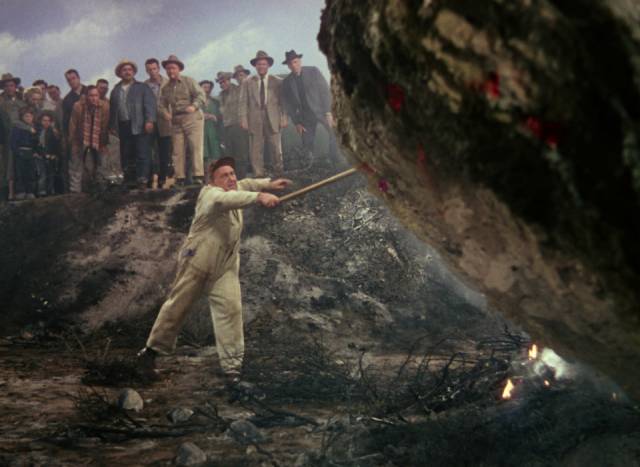
But in a sense, I still hadn’t really seen the movie because that first time was on a small black-and-white TV. Each subsequent viewing added something – a commercial-interrupted colour broadcast, an uninterrupted VHS tape, a laserdisc (where the colour finally achieved some genuine impact – I still remember that as having the most vivid image of any laserdisc I watched), then DVD … and now finally on Blu-ray from Criterion with a 4K scan from the original three-strip Technicolor negative. Across those multiple formats, the technical quality of the film improved almost exponentially with each viewing, while my experience of it as drama has evolved in interesting ways.
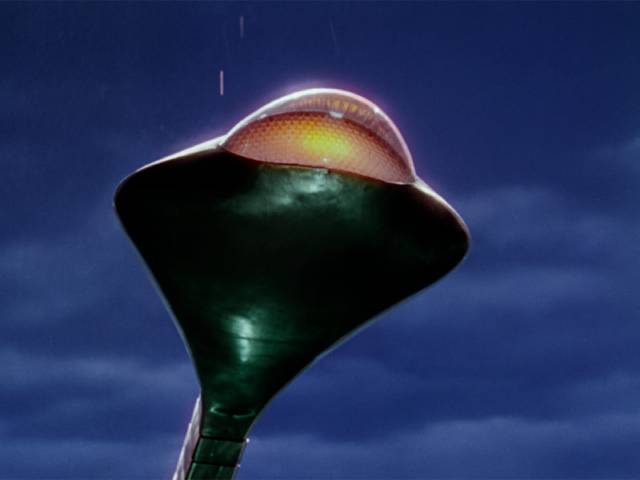
The original appeal of The War of the Worlds was unquestionably its apocalyptic imagery; in fact, that has been the one constant over the decades. A year before Ishiro Honda unleashed Godzilla on the Toho soundstages where miniature cities were crushed and burned, Pal and Haskin displayed the sleek war machines gliding across agricultural valleys and down Los Angeles streets, their heat rays and plasma cannons blowing lovingly constructed replicas of real buildings to pieces. Pal had all but created the disaster genre two years earlier with When Worlds Collide (Rudolph Maté, 1951), but as impressive as that film’s tidal wave sweeping through New York was, most of the destruction was seen from a panoramic distance. In War of the Worlds, we are given a close up view from street level; it’s more visceral, packing a more powerful punch.
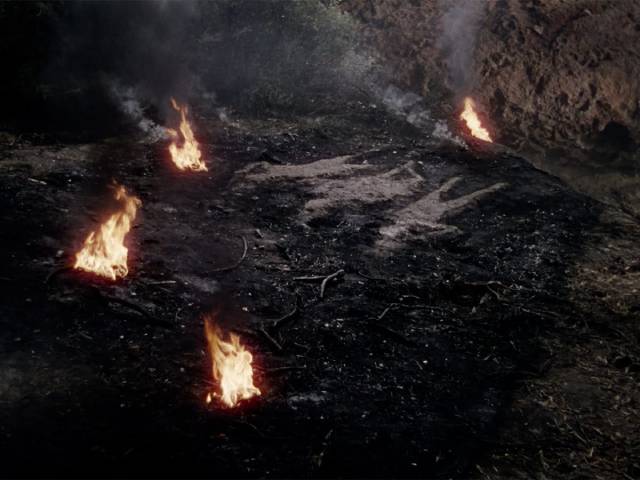
Even after almost seventy years, the miniatures and optical effects of The War of the Worlds are still impressive and have the power of physical reality which CGI still has difficulty emulating. The sumptuous Technicolor photography gives added weight to these images. There’s a particular quality to Technicolor, an aesthetic which doesn’t have a lot to do with realism (in his New York Times review of Gone With the Wind, future screenwriter and John Ford collaborator Frank S. Nugent commented that “color is hard on the eyes for so long a picture”) but much to do with creating feverishly intense fantasy versions of the world. Here, the colour reinforces our imaginative investment in the film’s events – the fierce molten red of the crashing cylinders super-heated by their descent through the atmosphere, the unwholesome ghostly green glow emanating from the crash site as the Martians assemble their war machines, the white hot flare of the heat rays and green ectoplasmic blobs fired by the machines’ cannons. As in most disaster films, the essence of this one is the paradoxical beauty of destruction, a beauty given its full due here for the first time since the original screening of Technicolor prints.
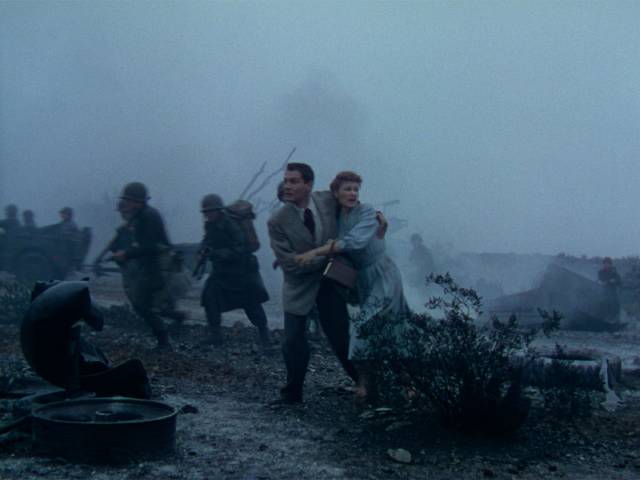
The power of this visual spectacle has always gone a long way towards mitigating the film’s less successful aspects. Barré Lyndon’s adaptation is functional rather than inspired, providing a frame for the spectacle without expending much energy on the drama. In the novel, Wells depicted an entire society grown complacent from centuries of relatively unchallenged power, suddenly confronted by the horrors of mechanized war, a colonial nation colonized and subjected to the violence and cruelty of a force which views it from a position of callous superiority. What the British Empire had subjected much of the world to was brought home with devastating force.
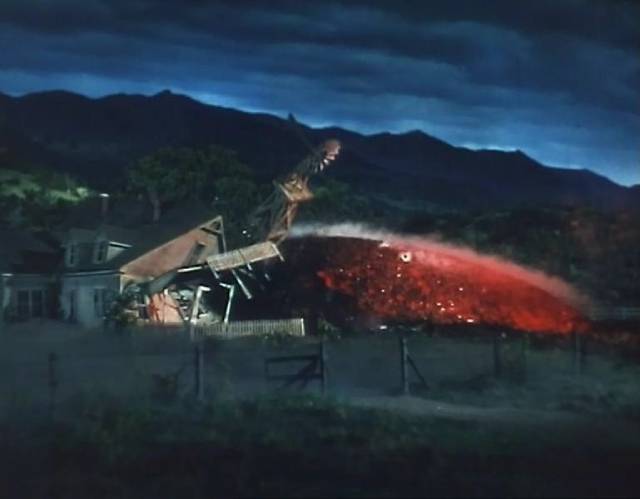
This larger theme is replaced in the film by a rather trite and perfunctory love story, one it can’t muster the energy and interest to make emotionally involving. Rather, it exists purely as a matter of form, in no way as convincing as the special effects used to depict the invasion. Gene Barry has relaxed appeal as physicist Dr. Clayton Forrester, who offers some advice to the authorities, but if you’re paying attention he has remarkably little effect on events. Ann Robinson struggles with her role as the love interest, Sylvia Van Buren, who has a Masters degree in library science but is soon relegated to serving coffee and donuts to all the serious men who are trying to confront the global threat. By the time the pair are trapped in a farmhouse partially crushed by one of the cylinders, all she can do is scream hysterically … and scream some more …
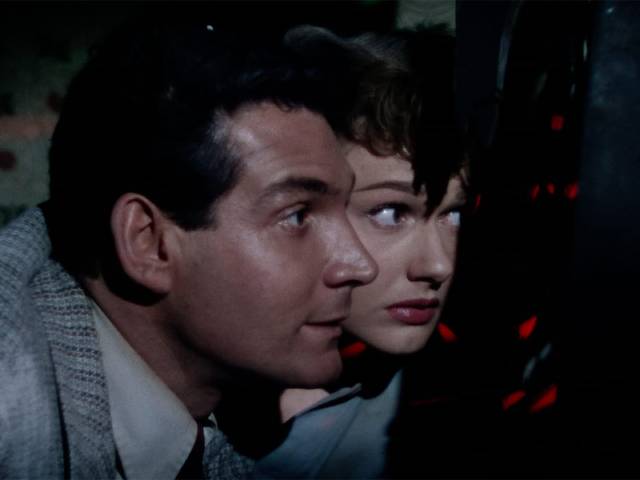
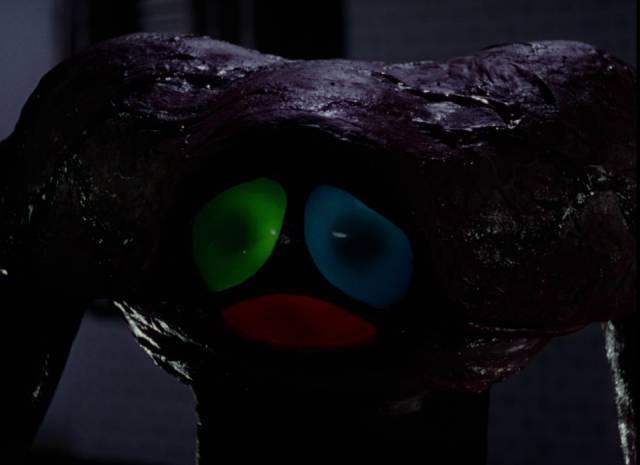
The hero and heroine are very quickly reduced to the level of helpless observers, so when they become separated in the third act as the Martians descend on Los Angeles, Forrester’s race against time to find her so that they can be together at the end is strictly pro forma. We get a glimpse of the self-destructive panic the helpless population have descended into when a mob destroys all the vital equipment Forrester has been driving to a safe location, but once he overcomes his injuries, Forrester no longer has any thought for the fight … he just has to find Sylvia, and thanks to an anecdote she related earlier, he knows where she’ll be.
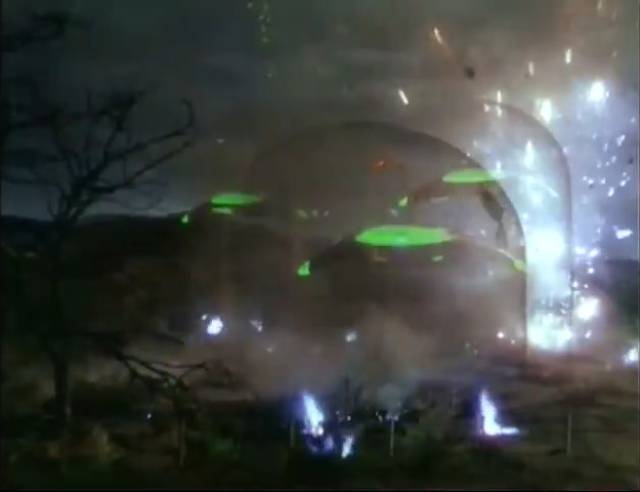
Which finally gets us to the thing which so firmly anchors The War of the Worlds in its time. It may be a stretch to read a Cold War subtext into the film – on a superficial level you might say the Martians are a metaphor for the Soviets (though their absolute technological superiority presents an embarrassing prospect); it’s probably closer to Godzilla, a more generalized warning about the dangers of pursuing ever more powerful weapons which at the time were already outstripping our control. That fear, rather than prompting a rational response and political solutions, has everyone retreating into the supposed comforts of religion and prayer; Forrester finds Sylvia in a church because she’s already told him that she knows this is the final refuge, the ultimate place of safety and comfort.
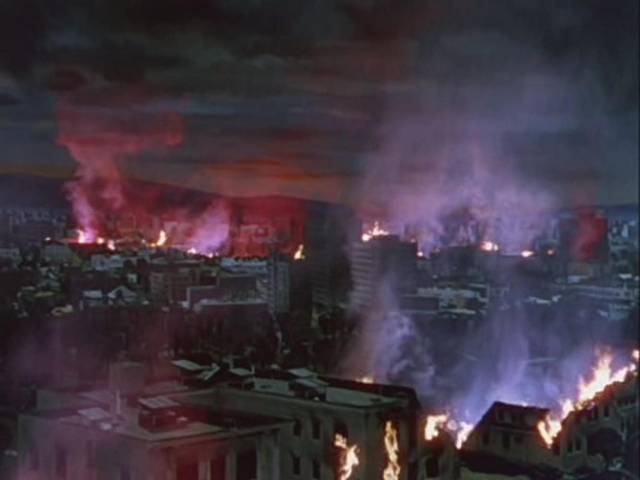
And, lo, as everyone cowers and prays, the Martian machines begin to fall from the sky, their inhabitants dying from some disease against which they have no natural immunity. In the novel, written by a rationalist with a scientific perspective, there’s a single sentence, a passing reference made in the momentary exhilaration following the Martians’ deaths, to “the humblest things that God, in his wisdom, had put upon this earth”. But in the chapter which sums up the lessons to be learned from the war, the narrator sees a dramatic and irreversible shift in mankind’s perception of our place in a universe which now can be seen in all its vastness – it’s a vision of what science reveals about the nature and origins of the universe and our own insignificance when seen from a cosmic scale.
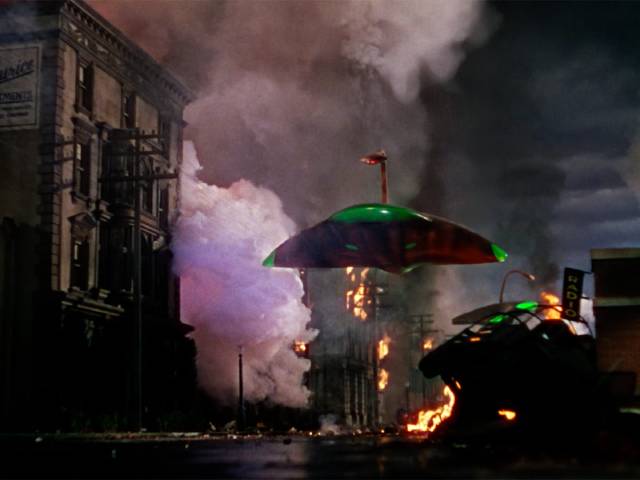
The film, however, delivers a message of God’s power and our need to submit. Rather than science we get religion – and by implication the idea that faith is what will preserve us from the unprovoked attacks of godless enemies. Rather than Wells’ expansive vision, we get an unhelpful reductionism. It’s in this that the film reflects the mixture of paranoia and smug certainty which marked the U.S. in the wake of World War Two. Reliance on ourselves is arrogant and misguided; but God is looking out for our well-being and reliance on Him will preserve us.
*

The disk
As already mentioned, the 4K restoration from the original three-strip Technicolor negative looks stunning. Technicolor’s saturated colours are still like nothing else and they really pop on Criterion’s Blu-ray. But beyond that, the restoration corrects a technical problem which has plagued the film since the late 1960s; with prints being made on relatively inferior film stocks the poorer resolution began to make the wires supporting the war machines more visible, a problem which only grew worse with subsequent video transfers from those inferior sources … which gave the impression that the original effects were compromised. With this 4K scan and careful colour correction, the wires become virtually invisible. An interesting detail is revealed in one of the disk’s supplements: when the war machines crash in the final scenes and the wires become slack, they become more visible. To get around this, the effects crew make sure that there are telephone poles nearby for the ships to crash into, the phone lines “hiding” the now loose suspension wires.
There are two audio options – the original mono track, which is very robust, and a 5.1 mix constructed by Ben Burtt. I have mixed feelings about the latter, as I do about a lot of audio “upgrades” imposed on older movies. As part of the process, Burtt had to reverse engineer many of the sound effects, figuring out how they were originally created and trying to reproduce them himself for the new mix. Although a primitive form of stereo was used for some screenings during the film’s original release, it essentially consisted of pumping the mono track into additional speakers placed around the theatre to boost the sounds of the battles and destruction. A surround track is not a representation of the original experience but rather an imposition to appease viewers who’ve invested in systems which were invented long after the film was made.
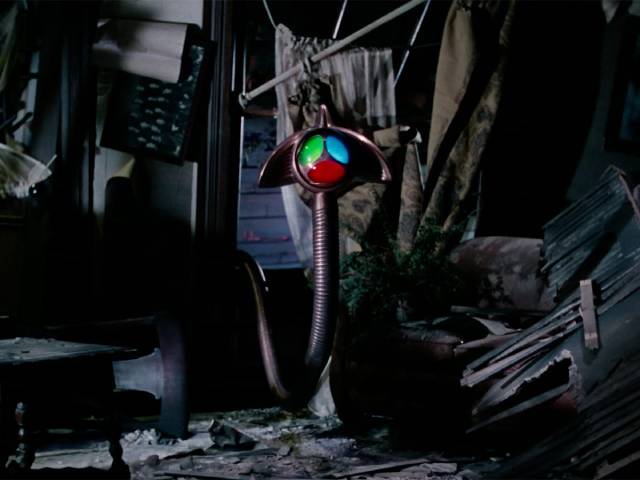
The supplements
There’s a mix of new and archival extras on the disk. There’s a commentary track recorded for the 2005 Paramount DVD release, with Joe Dante, Bob Burns and Bill Warren; a second track from that release with actors Gene Barry and Ann Robinson is omitted for some reason. Also carried over is The Sky is Falling (29:59), a retrospective documentary featuring interviews with cast and crew members, plus historians and fans; and the Orson Welles radio adaptation broadcast on October 30, 1938 (57:28).
New to this release are an audio recording of George Pal from 1970 (49:10) speaking at the AFI, and a recording from 1940 of Orson Welles and H.G. Wells in conversation on a San Antonio radio broadcast (27:57).
Newly produced by Criterion are two featurettes about the production and the restoration. In Movie Archaeologists (29:28), visual effects artist Craig Barron and sound designer Ben Burtt analyze the work of the film’s creative technicians and in From the Archive (20:28) Barron and Burtt are joined by Paramount archivist Andrea Kalas to discuss the technical issues involved in the restoration.
There’s also a trailer (2:23) and a booklet essay by critic J. Hoberman.
Criterion have done a superb job with this sixty-seven year old favourite, showcasing the remarkable technical achievement of Pal, Haskin and the technicians who rose splendidly to the challenge they faced in depicting the scale and devastation of interplanetary war. If the script and cast remain merely functional, the film’s visual achievement still provides a rousing viewing experience.
Comments